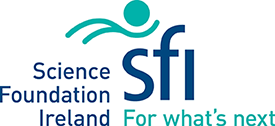Logic Modelling for strategic planning in public engagement
A logic model represents a Theory Of Change about how an intervention works.
Graphic Science use a logic model approach to support strategic planning in public engagement.
Client

Science Foundation Ireland
Background to the project
Logic models direct focus towards participant outcomes and away from the easy temptation of doing for the sake of doing. In 2018, Science Foundation Ireland (SFI) made logic modelling a requirement for public engagement (PE) planning at its 16 Research Centres. They hired Graphic Science to give training and support to public engagement leads at the centres to do this.
We had previously developed a logic model for SFI public engagement as part of our evaluation of their Discover public engagement and STEM engagement grant programme.
Our approach
Our support package had three elements:
1) Introductory webinar
The webinar introduced participants to the concept of logic modelling and how to approach it (ideally as a collective exercise) and addressed their initial questions. We wrote up the and sent them the Q&A section of the webinar. We also set them a preparation task for the face to face workshops.
2) Face to face public engagement workshops for public engagement leads and colleague from each SFI centre.
We delivered a one-day workshop for PE leads at four different locations. PE participants were encouraged to invite a relevant colleague as there is added value in undertaking logic modelling collectively. We worked with participants to develop a first draft logic models based on their existing and planned public engagement activity together with any strategic plans.
3) Ongoing remote support
After the workshop, we offered immediate and three-monthly follow-ups plus ad-hoc in-depth feedback on individual draft logic models.
The webinar was very effective at setting the scene and answering initial questions. Participants engaged well with the content and had plenty to say in the Q&A section.
Outputs
Centres created their own logic models over different timescales. They took varying approaches depending on the structure of their existing programmes and many produced multiple logic models.
Impact on the client
Over time public engagement programmes can expand unmanageably and they often retain a legacy of well-established projects that do not have well-defined impacts.
Following this work, SFI-funded research centre PE programmes remain full and complex, but over time and with ongoing use logic models should enable centres to refine their PE offer and re-focus their evaluation.
Using logic models as a mechanism to re-think programmes can help to identify projects and activities that do not fit the strategy or deliver its desired outcomes. A clearly documented strategy and logic model can release PE leads from the obligation to support outmoded projects. These can either continue to run independently or be reshaped to contribute fully towards the logic model’s desired outcomes.

